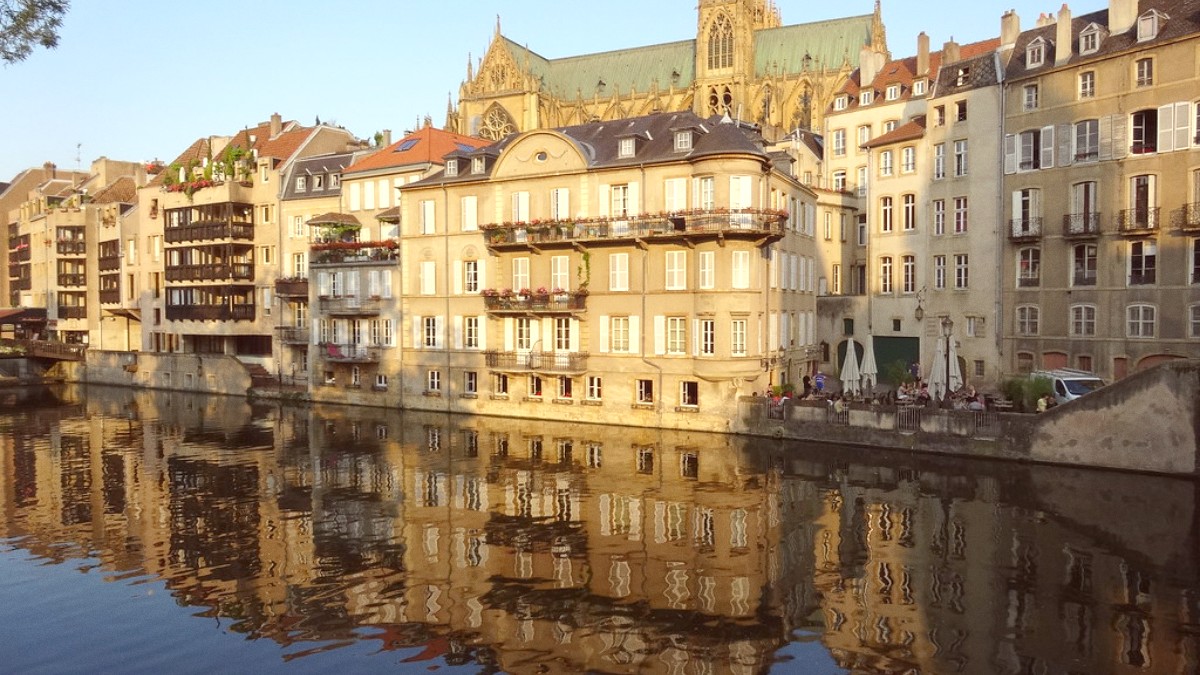
Alsace And Lorraine, France
Metz presents a compelling blend of past and present, a place where history feels alive. Its architecture captivates, its rivers invite peaceful reflection, and its culinary traditions promise hearty flavors.
The city’s atmosphere is one of approachable elegance. Unlike some major tourist hubs, Metz maintains an authentic local feel. Find yourself enjoying a coffee in a historic square, listening to the gentle hum of daily life.
This guide will equip you with the insights you need to appreciate this welcoming city, from practical travel tips to recommendations for local experiences. Find the appeal of Metz, a truly distinct European destination.
Metz is a strategic position in northeastern France, within the Grand Est region. It serves as the prefecture of the Moselle department. The city finds its place at the confluence of two rivers, the Moselle and the Seille. This river junction defines much of the city's layout and its historical importance. The Moselle River, a tributary of the Rhine, flows through the city, creating islands and waterways that shape its urban landscape. The Seille River joins the Moselle within the city limits, adding to the picturesque setting.
This location places Metz approximately 43 kilometers (27 miles) north of Nancy, another significant city in the region, and about 55 kilometers (34 miles) south of Luxembourg City. Strasbourg, the capital of the Grand Est region, lies approximately 120 kilometers (75 miles) to the west. Metz's position makes it a natural crossroads within the "Greater Region," also known as SaarLorLux, encompassing parts of Germany, France, and Luxembourg. This geographical setup historically made Metz a contested and influential center, impacting its development and culture.
The city's layout ties directly to this watery geography.
Recreational opportunities along the rivers.
The rivers defined much of the city's historical importance.
A unique urban fabric across numerous bridges and islands.
A short drive or train ride to neighboring nations.
Metz has a history spanning over 3,000 years, a narrative shaped by continuous occupation and shifting allegiances. This deep past began with Celtic settlements, evolving into a prominent city in Roman Gaul, then known as Divodurum Mediomatricorum. Under Roman rule, Metz prospered, leaving behind remnants that speak to its strategic importance and prosperity. The Roman influence laid the groundwork for the city’s enduring urban structure.
This complex history of alternating French and German rule profoundly shaped Metz. Its dual heritage is visible everywhere. French elegance shows in certain architectural styles and urban planning, contrasted with robust, monumental buildings from the German Imperial period. This blending extends to the city's culture, influencing its cuisine, traditions, and even the local dialect.
Metz earned official recognition as a "City of Art and History," a testament to its preserved past. The city's fortifications tell tales of sieges and defenses across centuries. Its churches, squares, and monuments each carry echoes of different eras and rulers. It enables one to appreciate the layers of influence that created the city you see today, a place where diverse European legacies coexist. Each street and building is a whisper of its long, eventful journey through time.
Metz served as capital of Austrasia during the Merovingian and Frankish periods. Its prestige continued through the Holy Roman Empire, where Metz held imperial city status. France annexed Metz in 1552. After the Franco-Prussian War, it was part of the German Empire until 1918. Metz faced German occupation again during World War II before its final liberation.
Metz presents a compelling blend of historical depth, architectural beauty, and a calm, welcoming atmosphere. It is a true crossroads of European culture, defined by its French and German heritage. The city’s core features the stunning Cathédrale Saint-Étienne, often called "The Lantern of God" for its vast expanse of stained glass, including works by Marc Chagall. This Gothic masterpiece is a testament to centuries of artistry and faith.
From leisurely strolls along the Moselle to delving into art at Pompidou-Metz, the city caters to various interests. It has a calm, yet stimulating, environment for those who appreciate heritage and a touch of modern flair. Metz truly is an unique and rewarding travel experience.
The stunning Cathédrale Saint-Étienne, "The Lantern of God," boasts vast stained glass, including Marc Chagall's works. The Centre Pompidou-Metz, a modern marvel, houses contemporary art.
The Moselle and Seille rivers weave through Metz, creating picturesque waterways and serene spaces. The Porte des Allemands, a medieval fortified bridge, shows Metz’s defensive past.
Metz's diverse history shows in its distinct neighborhoods. The charming Old Town contrasts with the grand Imperial Quarter. Culinary experiences reflect this blend.
The city’s diverse history shows in its distinct neighborhoods. The charming Old Town, with its medieval squares and narrow streets, contrasts with the grand, Prussian-era Imperial Quarter around the train station. This duality has visitors travel through different periods of European design and influence.
Metz provides a relaxed pace compared to larger French cities. Walking around is highly encouraged, with many pedestrianized areas.
Visitors will find a clean, green city proud of its parks and riverside promenades. This destination appeals to those seeking rich history, impressive architecture, and an authentic European experience without intense crowds. Metz is a welcoming city ready to share its distinct story.